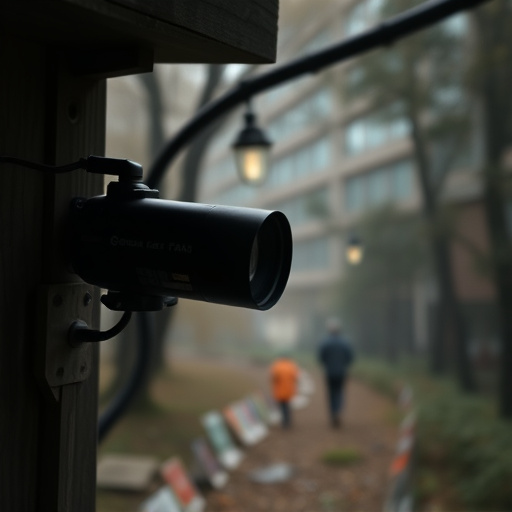Concealed cameras using electromagnetic signal scanning offer parents remote monitoring of babysitters, enhancing safety in the digital age. Techniques like EMF detection and antenna direction finding are essential for uncovering hidden cameras in homes or offices. While this technology provides peace of mind and quick issue resolution, ethical considerations—including privacy laws and consent—must be addressed to maintain transparency and respect for personal boundaries.
Uncover the secrets behind hidden lens electromagnetic signal scanning with our comprehensive guide. In an era where technology offers both convenience and privacy challenges, understanding concealed camera technology is paramount, especially for parents considering Concealed Cameras for Babysitter Monitoring. This guide explores the intricacies of scanning techniques using electromagnetic signals to detect these cameras, along with essential ethical considerations and legal aspects that every parent should know.
- Understanding Concealed Camera Technology: A Glimpse into Electromagnetic Signals
- Scanning Techniques for Uncovering Hidden Cameras: Tools and Methods
- Ethical Considerations and Legal Aspects of Babysitter Monitoring with Hidden Cameras
Understanding Concealed Camera Technology: A Glimpse into Electromagnetic Signals
Hidden camera technology, particularly in the context of babysitter monitoring, has evolved significantly with advancements in electromagnetic signal scanning. Unlike traditional methods that rely heavily on visual observation, modern concealed cameras employ intricate systems to transmit data and maintain secrecy. These devices operate by capturing and encoding visual and auditory cues through electromagnetic signals, ensuring minimal interference while maximizing privacy.
Understanding the way these signals work is crucial for effective monitoring. Electromagnetic signals allow for seamless transmission of data from hidden cameras without raising suspicion. By utilizing specific frequencies and encryption techniques, parents can rest assured that their interactions with babysitters remain confidential. This advanced technology not only provides peace of mind but also enables quick response to any potential issues, making it an indispensable tool in the digital age for ensuring safety and security while away from home.
Scanning Techniques for Uncovering Hidden Cameras: Tools and Methods
In the realm of hidden lens electromagnetic signal scanning, uncovering concealed cameras involves sophisticated techniques and specialized tools. One common method is the use of electromagnetic field (EMF) detectors, which can identify unusual fluctuations in magnetic fields that may indicate the presence of a hidden camera’s electromagnetic signal. These devices are particularly useful for non-invasive scanning in homes, offices, or any space where a babysitter might be monitoring a child—a scenario where Concealed Cameras for Babysitter Monitoring must be addressed with utmost concern.
Advanced users often employ direction finding techniques, utilizing antennas to pinpoint the origin of electromagnetic signals. This method is especially effective in dense urban environments or labyrinthine spaces where traditional visual inspections may fail. By combining these scanning techniques with rigorous knowledge of common camera frequencies and signal patterns, professionals can ensure comprehensive coverage, offering peace of mind for parents concerned about their child’s privacy while under a babysitter’s care.
Ethical Considerations and Legal Aspects of Babysitter Monitoring with Hidden Cameras
When considering the use of concealed cameras for babysitter monitoring, it’s crucial to navigate a complex web of ethical considerations and legal aspects. Privacy laws vary by region, but many protect individuals from unreasonable surveillance in their homes. Using hidden cameras in a private residence without explicit consent from all parties involved can be a significant breach of privacy and potentially illegal.
Parents considering this method must weigh the benefits against potential pitfalls. They should ensure that any recording is used solely for the purpose of ensuring the babysitter’s performance and safety, and not for invasive or abusive purposes. Moreover, it’s essential to inform both the babysitter and their parents (if applicable) about the camera’s presence to uphold transparency and respect for personal boundaries.
The hidden lens electromagnetic signal scanning guide highlights the advanced technology behind concealed cameras, offering a unique perspective on their detection. By understanding electromagnetic signals and employing specialized scanning techniques, it becomes possible to uncover hidden cameras in various settings, especially when monitoring babysitters. While this technology raises ethical and legal questions, responsible use can ensure safety and peace of mind for parents. When considering Concealed Cameras for Babysitter Monitoring, a balance between privacy and surveillance is key, encouraging further discussion on regulations and best practices.
